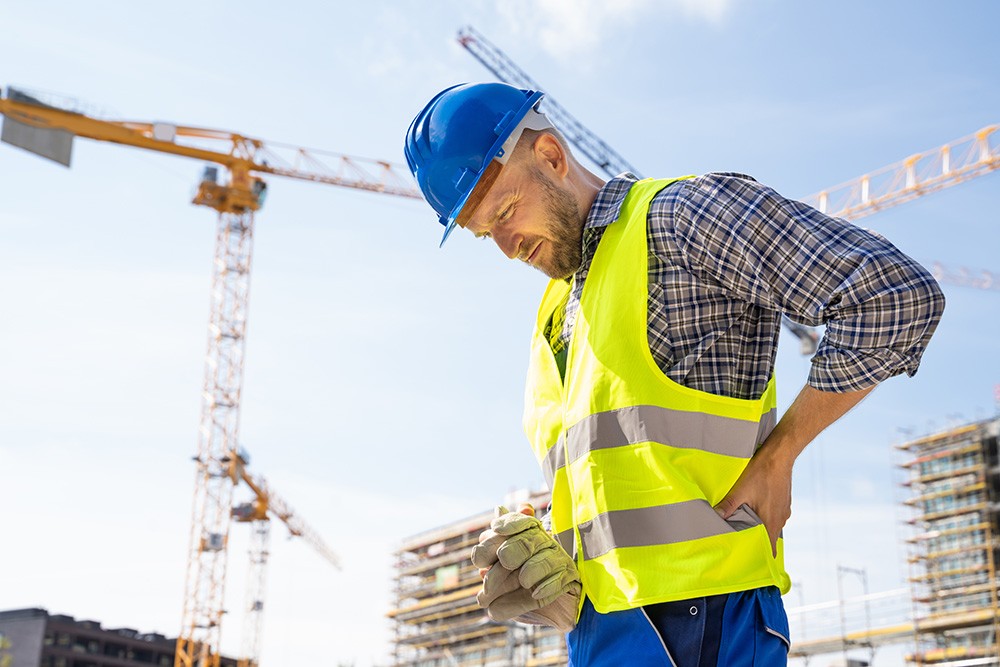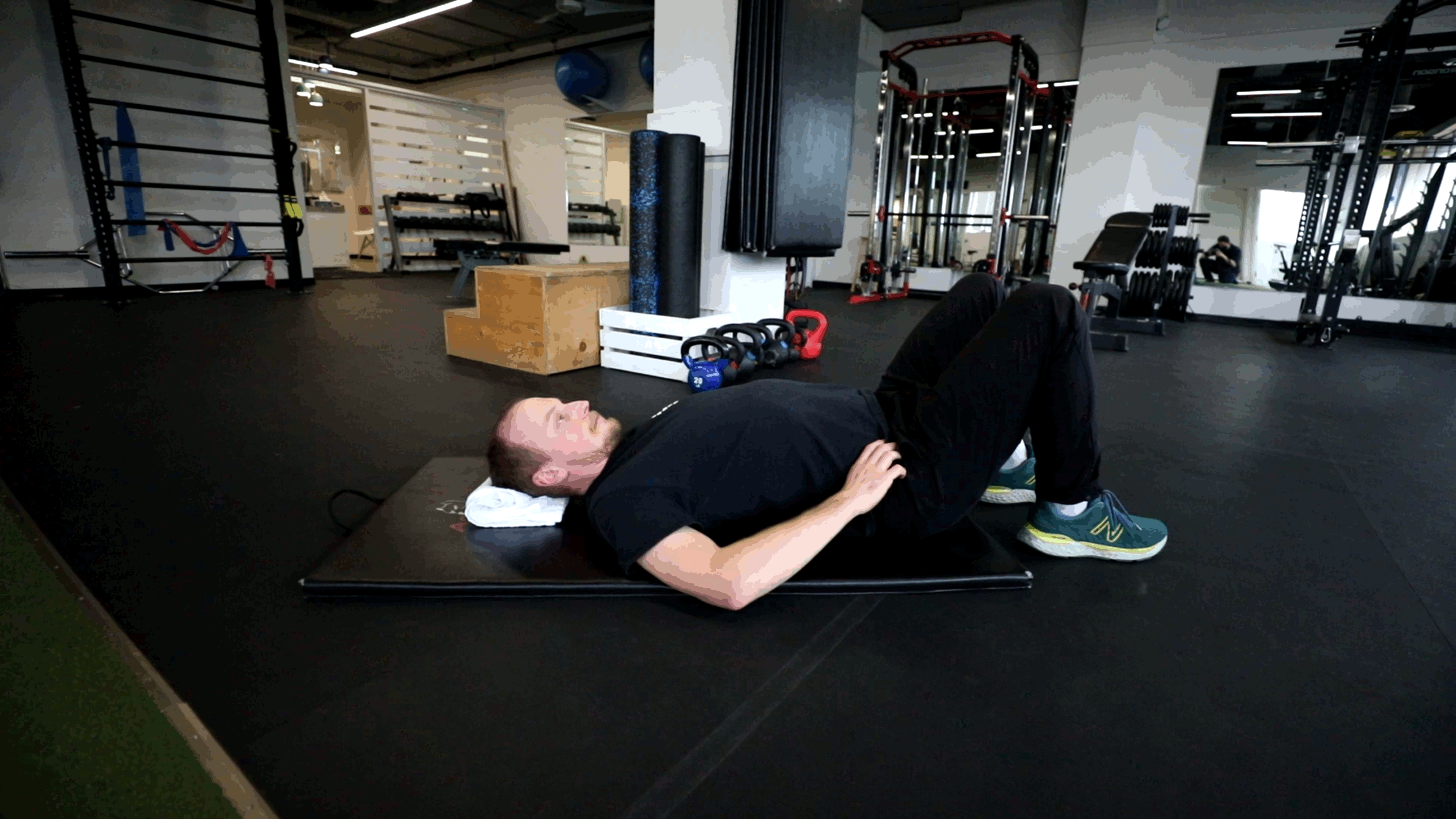Building health: Tips for construction’s most common ailment
Physiotherapist Jack Liney offered his advice for keeping construction worker backs in top form.

Construction is hard work and years of physical labour can take their toll on the body.
One of the most common complaints is lower back pain. Experts like Jack Liney, a physiotherapist at Westcoast SCI Physiotherapy in Vancouver, believe that workers can do a lot to address this kind of pain when it arises and prevent it from happening in the future.
Liney honed his skills working across a whole spectrum of hospital and rehabilitation settings, while also as a pitch side Physiotherapist in semi-professional rugby. Jack has worked with a wide variety of clients, including professional and olympic athletes, and construction workers.
Back pain causes and risk factors
“Musculoskeletal disorders (MSDs) are a major cause of work-related disability and lost-time illnesses in the construction industry,” said Liney. “Lower back pain is the most common reason for a construction worker to seek professional input from a physiotherapist. It’s also the number one cause of pain globally and number one cause of disability, affecting 80-90 percent of the world’s population.”
Despite being such a common problem the causes of lower back pain can be hard to determine. Liney explained that this is because the vast majority of time, lower back pain is what we class as non-specific, meaning there is not a single specific structure that we can reliably say for sure is what is causing the pain.
“When it comes to lower back pain, of course the biomechanical and physical factors are important to consider: limb shapes, intensity of the task, a person’s age and experience. However, because of the complexity of pain, this is only one piece of the puzzle,” said Liney. “There are so many other factors to consider other than biomechanical and physical factors, things like: the individual, psychology, tissue pathology, behavioural lifestyles, contextual factors, social and work environment factors. All of these things can increase or decrease someone’s chances of having lower back pain.”
According to Liney, despite the complexity around the causes and risks for back pain, work can often be done to address it.
He explained that lower back pain can be reduced through a gradual exposure to the imposed demands of the job, things like bending forwards and lifting heavy items.
“Injuries occur when the demand placed upon the tissues exceeds its current capacity,” said Liney. “Task specific strength and conditioning, lifestyle modifications and behavioural changes can increase one’s capacity and tolerance and this can reduce the risk of developing lower back pain.”
Back pain misconceptions
Not all back pain advice is created equal. Liney noted that modern research has shown that some common advice may not be that useful. Here are some misconceptions Liney says many have about lower back pain:
- Back pain is not caused by poor posture.
- There is no evidence that lifting with spinal flexion is associated with more risk of injury or pain.
- There is no evidence that certain postures are causative of lower back pain, back pain affects all postures.
- Pain with movement and exercise doesn’t mean you’re doing harm.
- Pain flare ups don’t mean you’re damaging yourself.
Liney offered this advice for someone suffering from lower back pain:
- Have the injury assessed by a professional. A physiotherapy needs to screen for serious circumstances that may require urgent medical intervention or referral to specialist.
- Find a physio that you connect with and that you can trust to make these important calls.
- Once cleared to start rehabilitation, begin with body weight functional movements, mobility and core exercises before trying resistance based exercises
- Find an employer that values good working conditions, with decent pay and regular breaks.
Back stretch routine for construction workers
When it comes to doing regular movement and exercise to prevent lower back pain, Liney said it’s often a no one size fits all approach.
“Human movement is individual based on lots of factors: age, experience, limb morphology, we are all shaped differently and this will affect the way we move,” he said. “For me personally, I like to focus on joint mobility exercises. I like them because they are low intensity and can be done regularly throughout the day. This helps me to avoid sedentary behaviour, a factor that can reduce physical capacity.”
Liney said he thinks of the spine as a multidirectional bike chain, and he offered this set of stretches to cover all directions that the lumbar joints are designed to move in:
Lumbar rotation
Lie on your back. Bend your legs, keeping your knees and feet together. Keep your knees together while allowing your top foot to peel off of the floor as you roll your knees from side to side. Keep your shoulder stable on the floor and rotate at your spine.

Active repeated cobra
Lie on your stomach. Place your hands underneath your shoulders. Maintain your elbows near to your rib cage and keep your shoulders down throughout the movement. Rest the top of your feet down into the floor and relax your legs. Press through your hands and lift your head and upper body, opening your chest and allowing your spine to arch into the Cobra position. Breathe in while arching your spine and breathe out while returning in starting position.

Child’s pose
While on your hands and knees: Move backward, bringing your buttocks towards your heels, lower your forearms to the floor and let your back round. Hold the position for a moment while breathing smoothly. Return to the starting position.

Pelvic tilts
Lie on your back with your knees bent and feet flat on the floor. Pull your belly-button towards your spine and clench your buttock muscles to roll the tail bone up off the floor. Slowly return to the starting position. Roll your tailbone on the ground until the tip of your tail bone touches the mat. The majority of the effort should come from your abdominal and buttock muscles. Relax and repeat.

Knee hugs
Lie on your back. Draw one foot up and then the other. Bring one knee in towards your chest and then the other, using your hands for assistance to curl yourself in to a ball.

*Editors note: Does your business or employer have a unique way they are addressing workplace injury prevention? Let us know at hello@readsitenews.com.

